Resurrecting America’s Great Old Diners, By Moving Them Across State Lines
Steve Harwin has made it his life’s work to bring old diners back from the dead.

The Hi-Lo Diner has lived in more U.S. cities than most of its patrons. Made in 1957 in a New Jersey warehouse owned by an Italian immigrant, this classic diner—then called the Venus Diner—lived for half a century outside Pittsburgh before going dark in 2009. Vacant but full of potential, the diner lay fallow for years.
Now, the old Venus Diner has reopened in Minneapolis, more than 800 miles away. Along with its new home, it’s gotten a facelift, a new name (the Hi-Lo Diner, shorthand for two nearby neighborhoods), and a bit of TLC from a history buff who’s devoted his life to rehabilitating old greasy spoons.
Over the past three decades, Steve Harwin, who owns Diversified Diners in Akron, Ohio, has refurbished and tricked out old diners and turned them over to new owners who want to give them new lives. Harwin, who hates corporations and chain restaurants, has devoted himself to the retro local restaurant instead; he’s completely restored around 20 diners, devoting between seven months to two years per project.
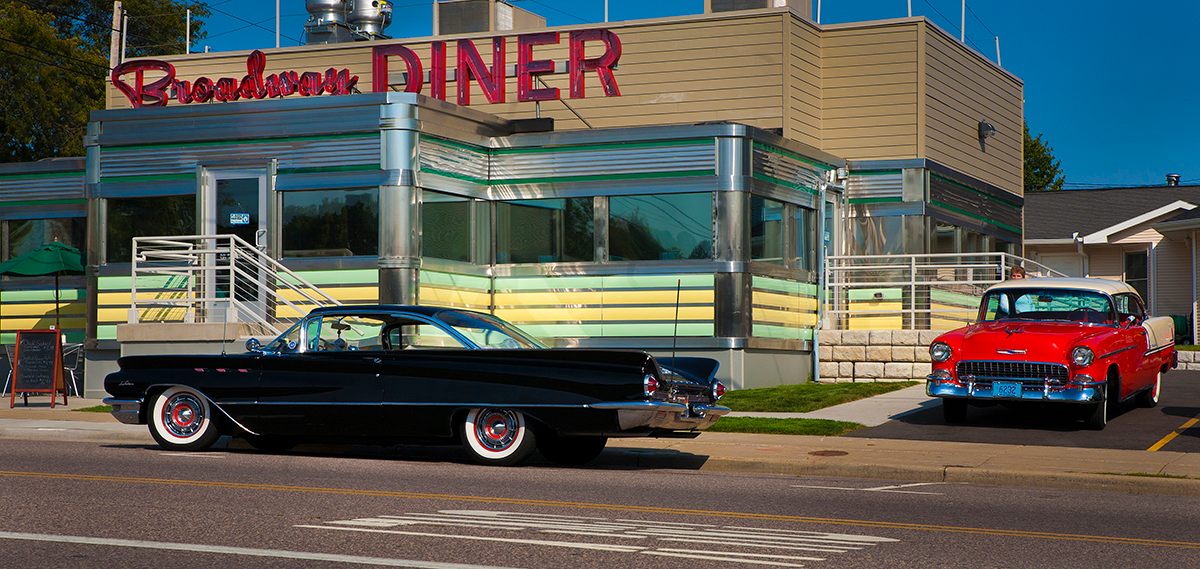
Harwin first started flipping diners after discovering that the late-night fry-cooking establishments of America transfixed consumers abroad. Harwin grew up in Cleveland but spent much of his childhood in Europe; his mother was French, and he speaks English and French fluently, German proficiently, and some Spanish and Italian (“I’d make Spanish mistakes in Italy, and Italian mistakes in Spain”).
During a semester abroad on a ship (“under the pretext of learning”) while studying at Menlo College in Palo Alto, he discovered a couple of things: motorcycles were very cheap in London, and the diner is to the U.S. what the pub is to England or the bistro is to France. While most students bought T-shirts in London, Harwin hauled a bike—and a business idea to pursue years later—onto the ship deck.
Back in the U.S., Harwin continued refurbishing motorcycles and then cars, starting with a beat-up Austin-Healey.
“I brought it home, and my family was very concerned,” he says. “It looked like such a piece of trash. When I got done with it, it won a car show. Then, I was a genius.”
But he also kept thinking about applying those rehabilitation skills to diners. He started window-shopping, and in Pennsylvania, he found one for sale. “I bought it, which was probably the biggest mistake, because I really didn’t know what the hell I was doing,” he says.
When Harwin first became seriously interested in flipping diners, he road tripped across the U.S., canvassing the diner scene. Most of the diners were concentrated in the Northeast, as a handful of companies, including Fodero, Silk City, and Jerry O’Mahony, had mass-produced classic diners, some of them incentivized by Franklin Roosevelt’s New Deal economic programs after World War II. While the 1950s became the heyday for diners, they weren’t a universal experience. In some regions, the idea of sitting elbow-to-elbow with strangers was considered outlandish. Rumor had it that one owner tried operating a diner in North or South Dakota, and the concept flopped. The diner “was treated like a UFO,” Harwin says.
During his hunt for the first 10 small diners, he’d drop into post offices or police stations to tap into community lore. “It was like looking for a lost kid.” As his lot grew, he cut a deal with the city that he wouldn’t keep more than eight; lately, he has only a few for sale.
“I told them, if I ever have more than eight, they should lock me up,” Harwin said.
Since 1987, Harwin has consulted for or sold parts to countless private owners or developers—everyone from man cave enthusiasts (“I can’t tell you how much diner stuff I’ve sold to people for their basements and garages”) to Hollywood production companies. One of his diners went to Oslo, Norway, where its new menu pays homage to its old home; food on offer includes the Brooklyn burger, Southern fried chicken, and an omelet called “The Eastwood” (“as in Clint,” the menu notes). At an Ohio aviation museum, the Tin Goose Diner from Jim Thorpe, Pennsylvania, is a recent spectacle, and Harwin has recently teamed up with a high-rolling developer in Buffalo, New York, to transplant a diner, made in Massachusetts, from Rochester into a blossoming section of the city.

“He’s probably one of the premiere diner restorers in the country right now,” says Larry Cultrera, an author in Boston who has chronicled diners on his “Diner Hotline” blog for a decade. “He’ll take it right down to the skeleton and completely rebuild it. A lot of diners have survived because of him.”
Vintage diner restoration is no ice cream sundae. Before a crane dropped Hi-Lo diner, piece by piece, in the Twin Cities, it was a massive headache. “It’s not rocket science, but there are no books,” Harwin says. He usually starts by gutting, finding parts to match the retro aesthetic—there’s only one go-to vendor for classic, porcelain enamel panels, so imagine the price—and then reassembling the diner and shipping it to a new home. There it must be permitted, zoned, and accessible to meet modern standards. And for dessert, new owners receive a binder of carefully curated records, photos, and anecdotes of the business they’ve just resurrected—built-in talking points for hungry patrons.
The menu for the new Hi-Lo Diner includes trendy cocktails (#AmIRite-O Sour and Alexander Hamilton) and pulled pork sandwiched between fried dough (Notorious P.I.G.), and the restaurant draws visitors including Adele. But restoring the diner was no picnic, says Harwin. “I lost a ton of money on that,” Harwin says of the Venus Diner project. “It was deceptively nice looking when I bought it, but underneath, it ended up being so much more than that… Everyone would run the other way. It looks like a disaster.”
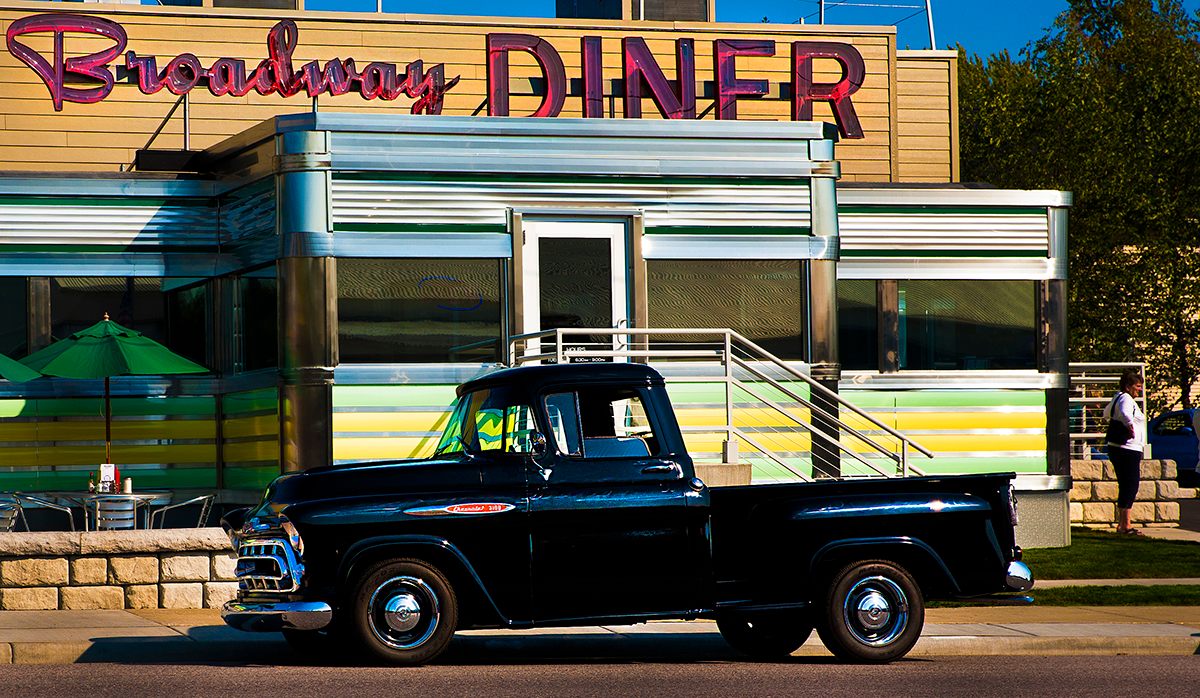
In the end, the Hi-Lo wasn’t a disaster—but that’s a testament to Harwin’s expertise and thoroughness. “I underestimated what I had to do, but as I got into it, I started learning a lot of things,” he says. “You can’t cut corners. It’s just not the way to do it.” His meticulous style helps ensure that people know he’s the one to call, even if he doesn’t publicly list his phone number.
Former owners and new owners alike appreciate Harwin’s work. “Steve was really picky about what we chose,” says Jeff Castree, who with his wife Vonnie owns the Broadway Diner, formerly Rosie’s Diner, in Baraboo, Wisconsin.
The diner opened in 2012 in a historic part of town, and serves nearly 2,000 people a week. The owners received financial support from the city, and the Broadway Diner—though new in town —sits on the historic registry. Part of Jeff Castree’s dream was to cook in front of customers, which became a matter of handiwork for Harwin—along with an expanded vestibule to keep waiting guests warm during the icy winters.
Once, a gaggle of older women passing through Wisconsin stopped for a meal, and one said she was from Groton, Connecticut, where the diner once lived—first as “Twin Bridge Diner,” and then under new ownership, as “Rosie’s.”
“Have you been to Rosie’s Diner?” Castree asked. “Well, you’re eating here again.”
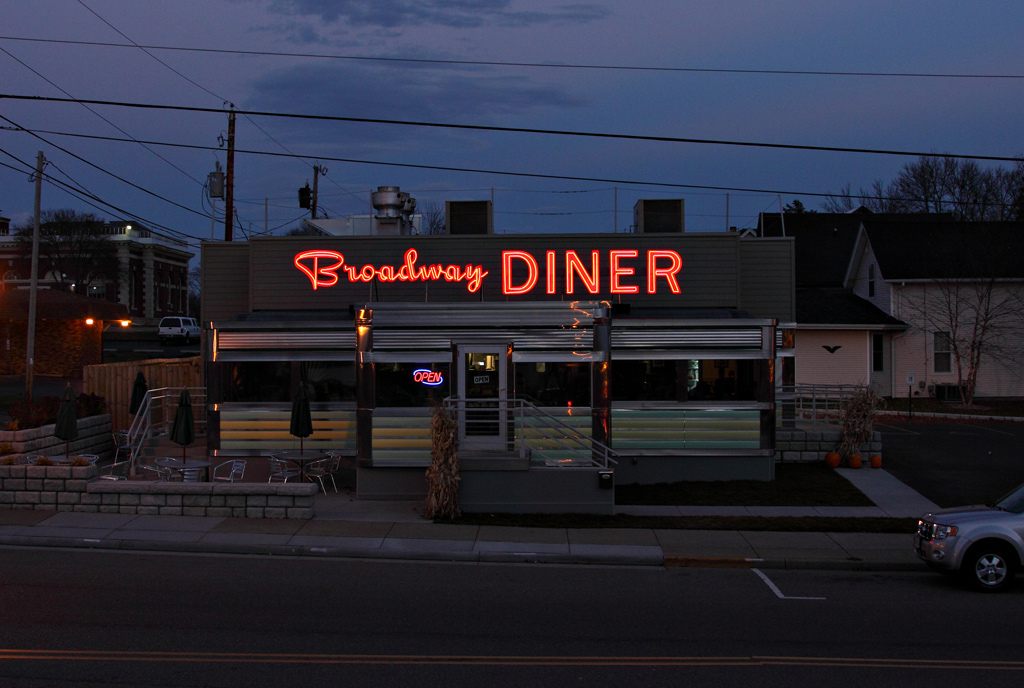
Denise Worthy, a military veteran who worked in the Ohio prison system for 12 years before quitting to run her family’s restaurant, has also met some of her new diner’s old patrons. Harwin found Worthy a stainless steel diner car, with sunburst accents and its original booths, which she attached to Nancy’s, the Cleveland restaurant founded by her parents.
Before it moved to Ohio, the diner lived in Boston, as “The Big Dig Diner,” named after a transportation project that dug tunnels across the city. In Boston, the diner opened in 1998 to help troubled teens rebuild their lives. After the Big Dig became part of Nancy’s, the previous owner and some regular patrons tracked it down to Cleveland and visited. The past was commemorated with a double-decker handheld called “The Big Dig Burger.”
Vintage diners have weathered long journeys and decades of history, but Harwin is not trying to mask their scars. For him, the job is a fair amount of reconciling the old with the new. “I’m a preservationist, and I’m trying to do historic preservation,” he says. “I would find ways to make a diner look totally authentic and original, but get the benefits of better, formal efficiencies.”
Their survival and story, he recognizes, begins when his work is done. “A diner has to have an owner’s personality,” he says. “It can’t be anything else.”
Gastro Obscura covers the world’s most wondrous food and drink.
Sign up for our regular newsletter.




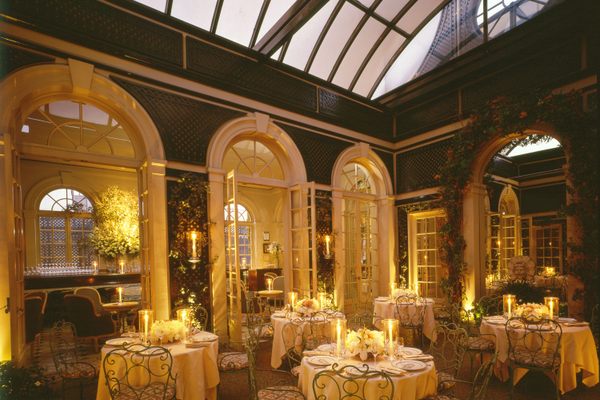


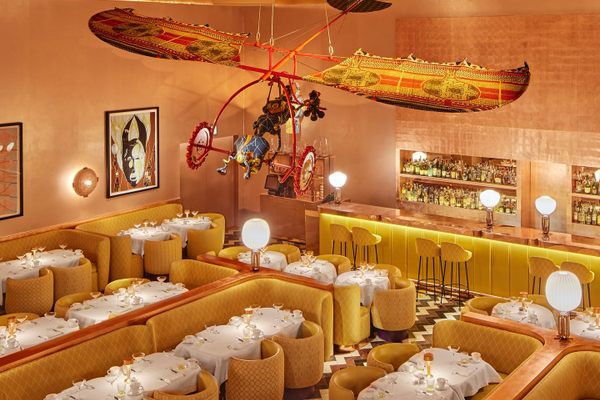
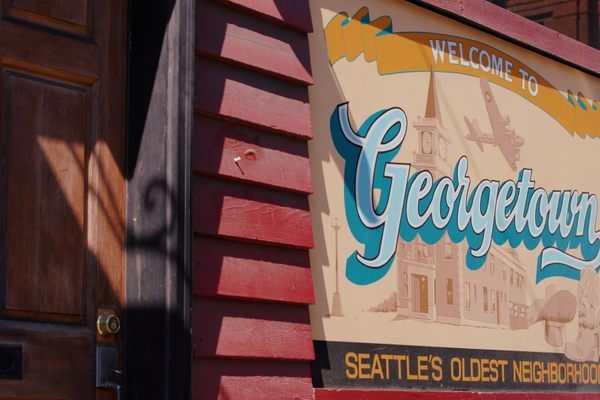














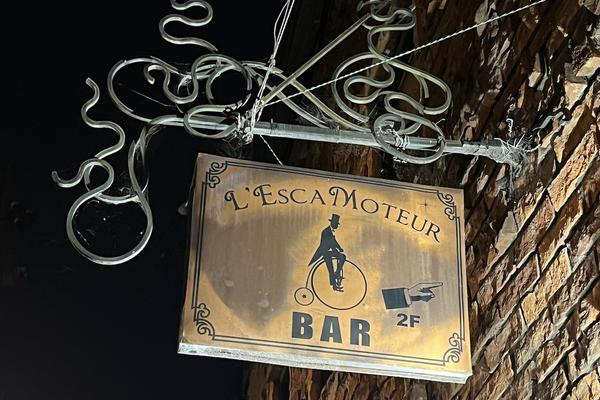


Follow us on Twitter to get the latest on the world's hidden wonders.
Like us on Facebook to get the latest on the world's hidden wonders.
Follow us on Twitter Like us on Facebook